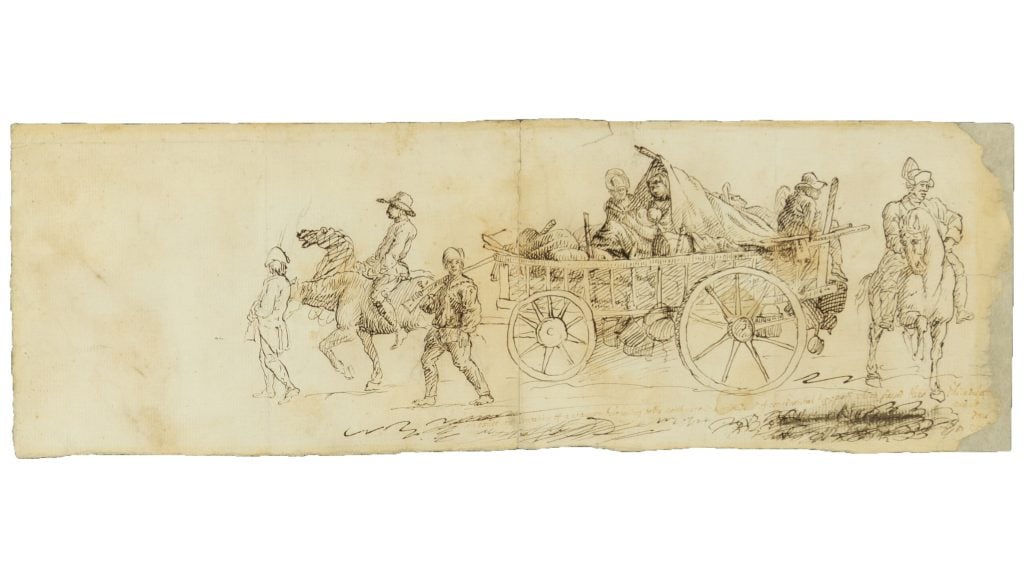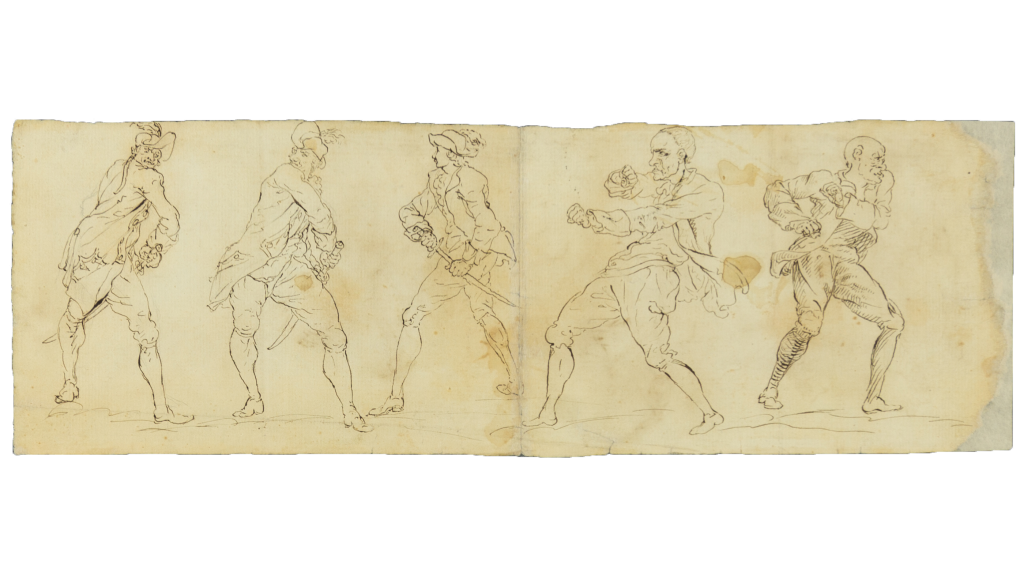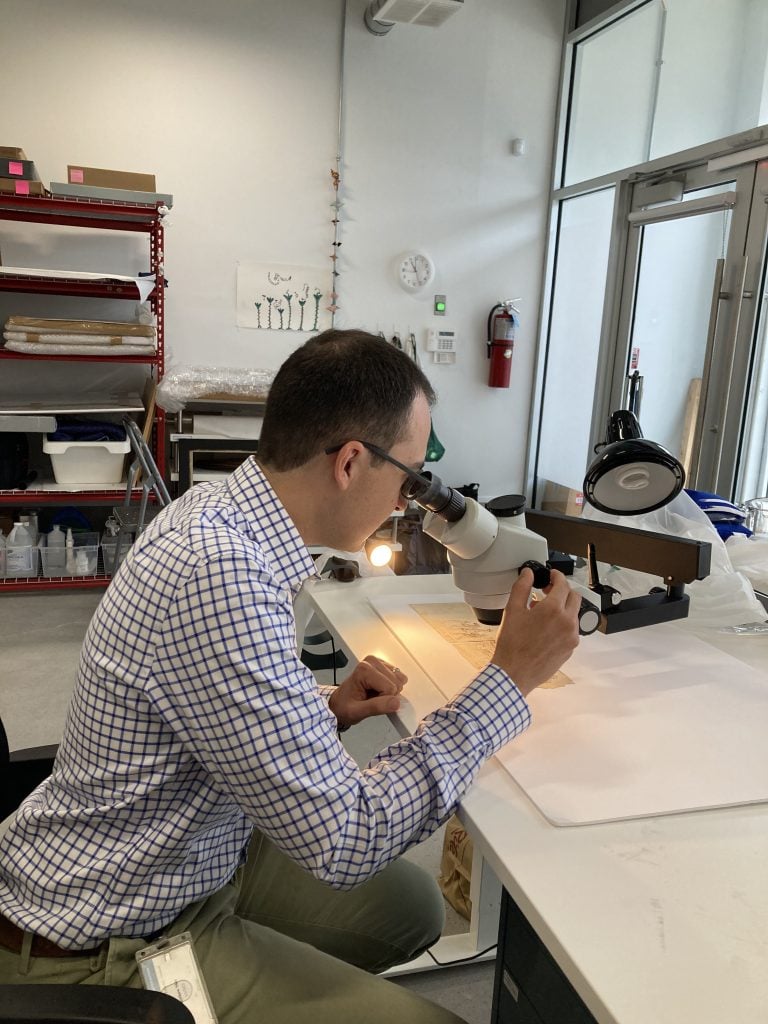Art World
A Rare American Revolution Drawing Was Found Hanging in a New York Apartment
The work is now one of only two artworks to feature female revolutionaries.

Matthew Skic, a curator at the Museum of the American Revolution in Philadelphia, has located the first portrayal of the Revolutionary War’s North Carolina Brigade in a private collection. The now-authenticated sketch by Pierre Eugène du Simitiére depicts two women and an infant loaded in a wagon guarded by officers. The gem is also now one of only two artworks to feature firsthand imagery of the Revolution’s oft-forgotten female revolutionaries. The other example (Pierre Charles L’Enfant’s 1782 painting of American encampments in High Point) features a single woman serving troops food.
Skic spotted the pen-and-ink sketch at the Upper East Side apartment of art collector and urban planner Judith Hernstadt, who notably purchased her home from Harry Winston. Skic told me he met Hernstadt at a private benefit the museum hosted in New York during 2019. He and the institution’s philanthropy officer Danielle Smereczynski first viewed Hernstadt’s collection in August 2023. “While there, we started discussing horses and Judith showed us this little sketch,” he recalled. “I was shocked to see what I saw!”

The rearside of Du Simitière’s sketch. Courtesy of the Museum of the American Revolution.
In a media release, the museum said Hernstadt acquired the sketch from a New York antiquities dealer during the 1970s. The Philadelphia Inquirer added that the dealer found it in the New Jersey home of a doctor who treated artists during the Revolution. An inscription alongside the sketch reads: “an exact representation of a waggon belonging to the north carolina brigade of continental troops which passed thro Philadelphia august done by…” The rest of the text was lobbed off during a paper repair. Five studies of two dueling male figures remain on the verso.
According to the Inquirer, Skic spotted a hunting shirt in the scene that encouraged him to investigate further. Hernstadt let him take the work back to Philadelphia for further study, and ultimately donated it to the museum. The Raleigh-based North Carolina Society of the Cincinnati, descended from the state’s Revolutionary officers, helped fund Skic’s efforts. He found articles confirming the Brigade’s August 1777 trip through Philadelphia to the Battle of Brandywine. Paper conservator Corine McHugh confirmed the sketch’s paper and ink date back to the Revolutionary era. Additional handwriting analysis and comparative art examinations attributed the sketch to du Simitiére—a Swiss transplant known for documenting the Revolution’s rise.

Skic studying the sketch. Courtesy of the Museum of the American Revolution.
Researchers are still studying Du Simitière’s many manuscripts and drawings at the Library Company of Philadelphia and the Library of Congress to determine whether this sketch led to something larger. Still, the discovery’s notable on its own.
“When Du Simitière died in 1784, his personal belongings and the collection of his museum were auctioned off,” Skic told me. “Finding a previously undocumented sketch that was unknown to historians is extremely rare and exciting.”
Women weren’t as rare during the Revolution. About 2,000 women camped alongside their enlisted husbands and fathers, completing household tasks all the while. They probably were kept out of view because Washington decried their presence, calling women and children “a clog upon every movement.” Get a rare look at the real Revolution when this sketch goes on view at the museum in a few weeks.





